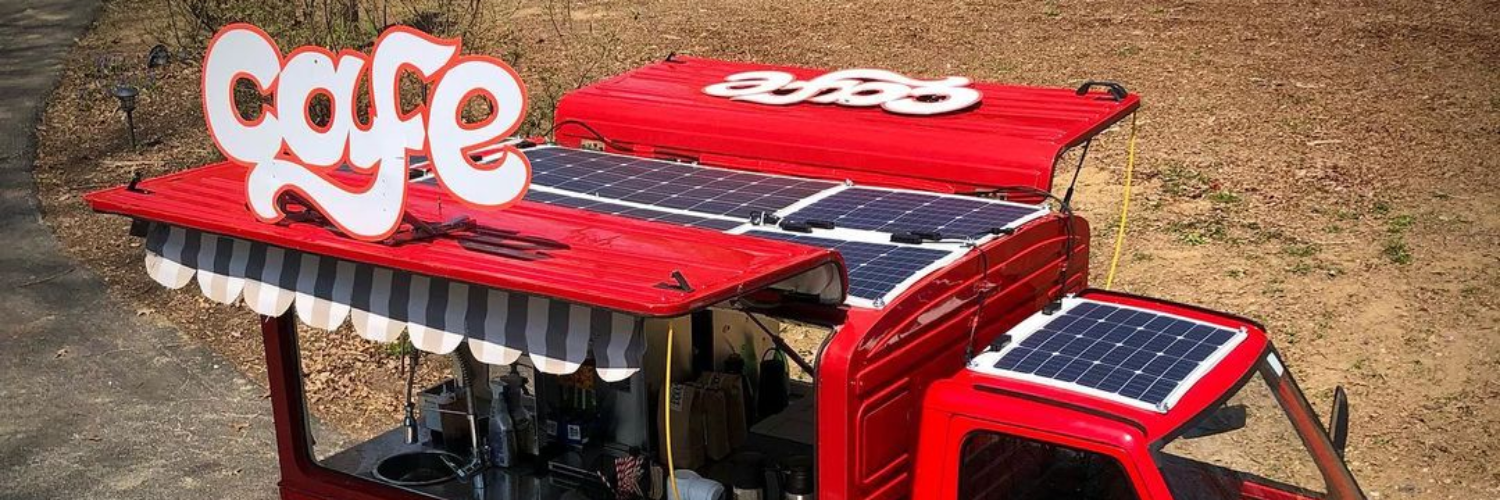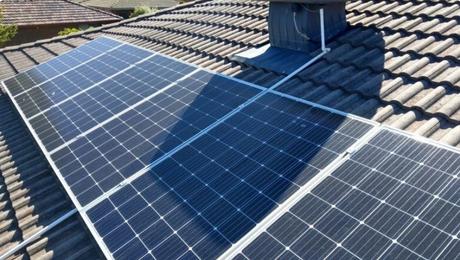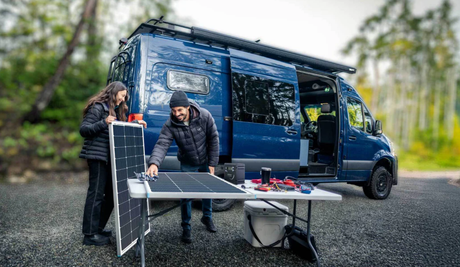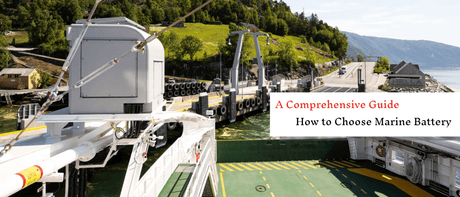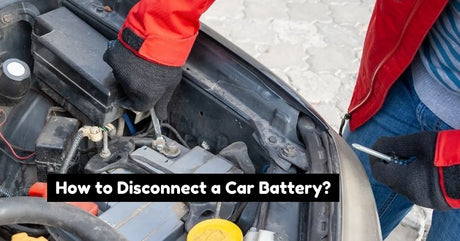Are you a smart energy consumer and proud owner of solar panels that rest atop your house, trailer, RV, camper van, or whatever space you happen to own? If so, you’ve probably heard of solar inverters, might own one, or be considering the purchase.
But do you know about inverter chargers, their role in solar charging, and how to select the right one for your solar energy system? If you want to learn what an inverter charger is and how it works, keep reading. .
What Is the Advantage of an Inverter Charger Over a Regular Inverter?
In solar charging and other solar energy applications, an inverter is a device that converts direct current (DC) power to alternating current (AC). AC power is the standard for North American homes and other buildings. It also has benefits like serving as an emergency shut-off in case of a fire.
Regular (aka, “grid-tied” or “on-grid”) inverters can be connected to a building’s electric meter, allowing it to use energy supplied by the municipal utility when necessary. A benefit is allowing its users to return excess energy from solar panels for energy credits when energy-producing sunlight isn’t plentiful.
What Is a Hybrid Inverter Charger?
Hybrid inverter chargers (or “inverter chargers”) combine the functions of traditional inverters with those of battery chargers—especially the deep-cycle batteries used in solar energy. A deep-cycle battery is designed to be fully discharged regularly to prolong its use.
Initially, inverter chargers were intended as battery chargers for on-grid solar power energy systems. They have the flexibility to charge a collection of batteries connected to a grid system with energy from that source. This two-way exchange of energy has been crucial for efficiently storing and using energy collected by solar panels.
Larger-capacity inverter chargers can meet the backup power needs of an on-grid home solar system through these “battery banks.” In traditional standalone photovoltaic (PV) systems, inverter chargers convert DC power from these batteries into AC power as needed for household use (appliances, etc.).
What Are Pure Sine Wave Inverters?
Electrical waveforms are the foundation of AC signals. When a current in a circuit alternates, the voltage will too, and an alternating voltage then causes an alternating current. Signal waves tend to be repetitive or "periodic," meaning they repeat a particular pattern or wave shape.
The most important wave is the sine wave. Electronics engineers favor it because of its purity, consisting of only a single frequency; it alternates above and below its average at a constant rate.
Sine waves provide a seamless and predictable electrical current. Therefore, many solar users consider pure sine wave inverter chargers an excellent choice for converting DC battery power (e.g., from solar panels) to AC for residential or commercial use. Pure sine waves produce cleaner energy.
Pure sine wave inverter chargers cost more than modified sine wave inverter chargers. Still, they can run various appliances or devices more efficiently and extend their usable lives, saving consumers money over time.
What Size Inverter Charger Do You Need?
We recommend adding up the rated watts for the loads that you plan to run simultaneously. For a grid-tied or more extensive off-grid system, prepare to invest in an inverter-charger that can handle, at minimum, 150 percent of your regular load.
Suppose you have a 3,000-watt continuous demand on your property. You should have at least a 4,500-watt inverter charger to back it up. You should also size your battery bank according to your load, solar production, and the number of days you expect to need storage. A solar panel calculator can help you do the math.
Recently, smaller mobile inverter chargers have seen growing popularity with the recreational vehicles mentioned above and some EMS units. Small solar panel kits allow people to benefit from solar energy while on the go.
Moreover, many people prefer living “off-grid” all or part of the time. These aren’t the vacationers and retirees who travel the country in recreational vehicles like RVs and camper vans. They’re the ones who reside permanently in remote places with cabin (or tiny home) solar energy systems.
Since inverter chargers entered the scene in the last decade, both off-grid groups enjoy the convenience of electricity virtually anywhere they are located. An inverter converts DC to AC power, and the charger replenishes the energy stored by batteries.
You’ll often find a 12-volt, 3,000-watt inverter charger in camper vans and RVs, whereas 24-volt models are typical of buses, other large vehicles, and larger battery banks (often used with standalone off-grid systems), including those designed for home solar panel kits .
What Battery Types Is the Inverter Charger Capable of Charging?
Two main types of deep-cycle batteries are the most commonly used in solar applications: lead-acid and lithium-ion. The following explains how the two types break down.
Flooded lead-acid batteries,the cheapest battery option, are the least efficient and require the most maintenance. These batteries contain a lead-acid electrolyte combination. You must carefully maintain the liquid in these batteries. They also need certain health precautions.
Sealed lead-acid batteries need little if any maintenance, won’t spill, and are more efficient than flooded lead-acid batteries. The two main types of sealed lead-acid batteries are absorbed glass mat (AGM) and gel batteries .
- AGM batteries have shorter lives than gel batteries. But they cost less and have a better temperature range.
- Gel batteries use silica to make the electrolyte solution highly viscous and thus more effective. However, they tend to have lower charger rates and output than AGM batteries. Plus, they take longer to recharge.
Lithium iron phosphate batteries are the most advanced and expensive solar battery type. Anyone wanting efficiency and portability should consider these compact and lightweight batteries. They have an extensive lifespan (at least ten years) and high discharge and recharge rates. They also require virtually no maintenance and lose less capacity when idle than other battery types.
What Is a Transfer Switch?
Most inverter chargers have automatic built-in transfer switches to sense when connected to an AC power source such as a generator. These switches make inverter chargers more efficient and user-friendly.
When an inverter charger and transfer switch recognize the AC, the unit acts as a conveyance, powers your devices from the AC source, and can even charge your batteries (if you wish). If the inverter charger detects an AC power loss, it will switch to inverter (or DC) mode and provide power from the batteries.
What to Consider When Choosing an Inverter Charger
What is the input voltage?
In the case of a mobile solar setup, when choosing your input voltage (DC power), you want an inverter charger that matches the battery's voltage providing the power. So, if you currently have a 12V battery, you should go with a 12V DC inverter charger.
What is the output voltage?
If you live in North America or parts of Latin America, chances are you’ll use 120V AC power for your output voltage. Other countries use 220-250V AC power.
Is it a pure sine wave inverter charger?
Remember that pure sine wave chargers can save money over the long term, compared with modified sine models with lower purchase prices.
Will it provide continuous wattage?
Be sure your inverter charger can handle at least 1½ times the load of continuous demand you ordinarily have.
Is there an internal transfer switch?
This switch adds convenience by automatically determining if and when you're connected to another power source (like a generator) and proceeds accordingly.
Is the unit protected from corrosion?
If it’s for outdoor use, the device should be water and weather-resistant.
What’s the Difference Between an Inverter Charger and a Charge Controller, and Do You Really Need Both?
A charge controller ensures that power flows in one direction only, charging deep cycle batteries from the power generated by solar modules while preventing the current from returning to the PV array at night.
Charge controllers come in two formats, PWM (Pulse Width Modulation) and MPPT (Maximum Power Point Tracking). These terms refer to how a charge controller modifies the voltage to charge batteries from a PV system. Almost all PV + storage applications require both an inverter charger and a charge controller.
Even so, while MPPT charge controllers provide optimal charging efficiency, the light from the sun may still not be enough to charge batteries in winter or during bad weather reliably. Many power loads also require standard AC. This is why an inverter charger is needed to keep batteries sufficiently charged and provide power for various uses.
Still, inverter chargers cannot directly charge batteries from the DC provided by a PV array. Owners need charge controllers to match the PV voltage to the battery and regulate charging correctly.
Do you need both an inverter charger and a charge controller? If a panel puts out 2 watts or less for each 50 battery amp-hours, you probably don't need a charge controller. For virtually anything else, yes, you do
The Sun Shines Bright on Solar Power
You can't keep the sun shining all the time, though. That's why inverter chargers have an essential role to play. They allow home and business owners—whether on or off-grid—to keep the power flowing as if they were a sunny one every day. They can store the sun's energy or power from the utility grid in battery banks until needed for home systems, appliances, and devices.
Solar power is only slowly entering the public imagination as we enter a new decade. So keep your eyes on the horizon for the sun, as well as more solar energy innovations from solar energy companies like us.
Lithium-ion batteries can go as high as 1850CAD each, but they are the most reliable and offer advantages that the other options can’t provide. Being the latest in solar battery technology allows them to last significantly longer than other battery types, and they are very user-friendly.

